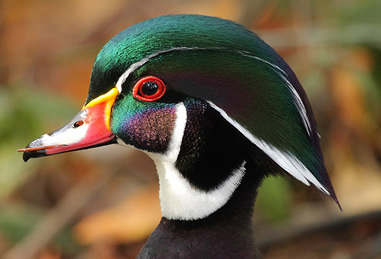

THE USE OF GEOSPATIAL TECHNOLOGIES AND SPATIAL ANALYSIS
IN BIODIVERSITY STUDIES

by
Brian Klinkenberg
Department of Geography, University of British Columbia
Introduction
The advent of geospatial technologies has dramatically changed the way we study the natural world. Spatial analysts now use advanced remote sensing techniques to assess climate change and air pollution transport, GPS and remote sensing to study migration of elephants and wildebeasts, and GIS mapping software to map and analyze species distributions. In this section, we explore spatial analysis and the role of geospatial technologies in exploring and understanding biodiversity. The evolution and widespread use of these geospatial technologies has opened new windows on how we view biodiversity and associated complexities. Additionally, the availability of these technologies at the public level has brought in new avenues of data gathering, with VGI (Volunteer Geographic Information) and citizen science playing prominent roles in some areas of study.
What is Spatial Analysis?
Spatial analysis is the quantitative study of phenomena that are located in space. As defined by Goodchild (2001), spatial analysis encompasses a general ability to manipulate spatial data into different forms and extract additional and deeper meaning. There is growing significance of space, spatiality, location, and place in social science and physical science research. In particular, spatial analysis plays an increasing role in Conservation Biology as the spatial dimension of species and habitats gains recognition.
What are Geospatial Technologies?
In a simple way, geospatial technologies include the 'things' that collect and process spatial data. That is, they are technologies that can tell us where something is on the landscape, how it uses the landscape, and even tell us details about the landscape (for example, slope, aspect, elevation). They include:
These technologies are used to collect multi-temporal spatial data (data collected from the same spot at different times), such as data collected by satellite. Spatial analysts use the data collected and processed by these technologies, along with statistics and computer modelling, to analyze research problems and develop predictions. The use of these technologies has dramatically changed how we conduct research and has led to some novel approaches in biodiversity studies and the related field of conservation biology.
Using Spatial Analysis and Geospatial Technologies in Biodiversity Research: Some Examples from our Research
Geospatial technologies and spatial analyses have opened new windows of observation in biodiversity studies. They allow us to obtain more data, to view more data, and to visualize the results of those data. Uses range from work in developing safe nature reserves for elephants to locating bird colonies to analyzing forest harvest activities. Here are a few examples of related projects conducted by our research lab in the Department of Geography:
Please cite these pages as:
Author, Date. Page title. In Klinkenberg, Brian. (Editor) 2017. Biodiversity of British Columbia [www.biodiversity.bc.ca]. Lab for Advanced Spatial Analysis, Department of Geography, University of British Columbia, Vancouver.
All material found on this web site is covered by Canadian Copyright Laws. Please contact the respective copyright holder if you wish to use any illustration, photograph or text.